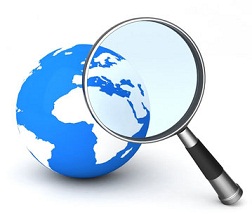
Online Patent Search and Services
Invention is defined as meaning an invention or discovery. In general a patent may be obtained for any new and useful process, machine, manufacture, composition of matter or any new and useful improvement thereof. A patentable invention is one that is new, non-obvious and useful.
Patent is a monopoly right granted to protect an invention of a technical nature. The right is granted for a limited period of time in return for the development and disclosure by an inventor of a novel idea that brings about solution to a specific problem in a particular field.
For an invention to qualify for patent protection, it must be novel in that is not already a part of the state of the art, i.e it must not have been made available to the public in anywhere in the world before the priority date (or where there is not priority date, the date of filing of the patent application.
The invention must also be non-obvious such that it would not have occurred to any specialist in the particular field to come up with the same invention if posed with the same problem.
Lastly, the invention must be capable of industrial application. Patents may be obtained for products and process in all fields of technology, provided the subject matter of the invention satisfies all three criteria for patentability.
Any person entitled to claim rights in the invention, e.g. by virtue of being the inventor, or under an assignment or employment agreement, can apply for patent. In addition to the requisite form and fees, the application has to lodge:
The specification (which comprises the description, claims and drawing)
The abstract (in triplicate)
The description needs to describe the invention and explain the mode of operation or principle sufficiently to enable the invention to be performed by a person skilled in the art.
The claims establish the patentability of the product and the extent of protection conferred by a patent, if granted. It is important that the claims are well drafted for them to be effective protecting the invention. The claims must also be supported by the description and must be as broad as permissible, but must not define anything that is already known or which is not in fact covered by the invention.
Drawing can be used to supplement the description of the invention. Drawings may be:
Schematic
Cross-sectional; or
In a form that can properly illustrate the invention.
The various illustrated parts should be numbered and referred to in the description.
Every application must contain an abstract that is a brief summary of the invention and should include the most important technical features of the invention. The abstract is not part of the specification but is used in the publication of the application. The abstract ought to be concise. If there are drawings in the specification, the drawing that best illustrates the invention should accompany the abstract when published.
In general, the examination process in the US includes a search of relevant prior art by the Examiner of the United States Patent and Trademark office. Very few patents are allowed upon submission. If during the examination, the Examiner raises objections, the applicants would be notified by way of an office action, and be given an opportunity to respond. The applicant may respond either by amending his patent, or with arguments as to why the Examiner is wrong in his objections, and the application will be reexamined. If the examiner in his objections and the application will be re examined. If the Examiner is persuaded to issue the patent, a notice of allowance will be issued. If not, a final office action will be issued explaining why the patent cannot be issued.
Get a Patent Service online - Contact






